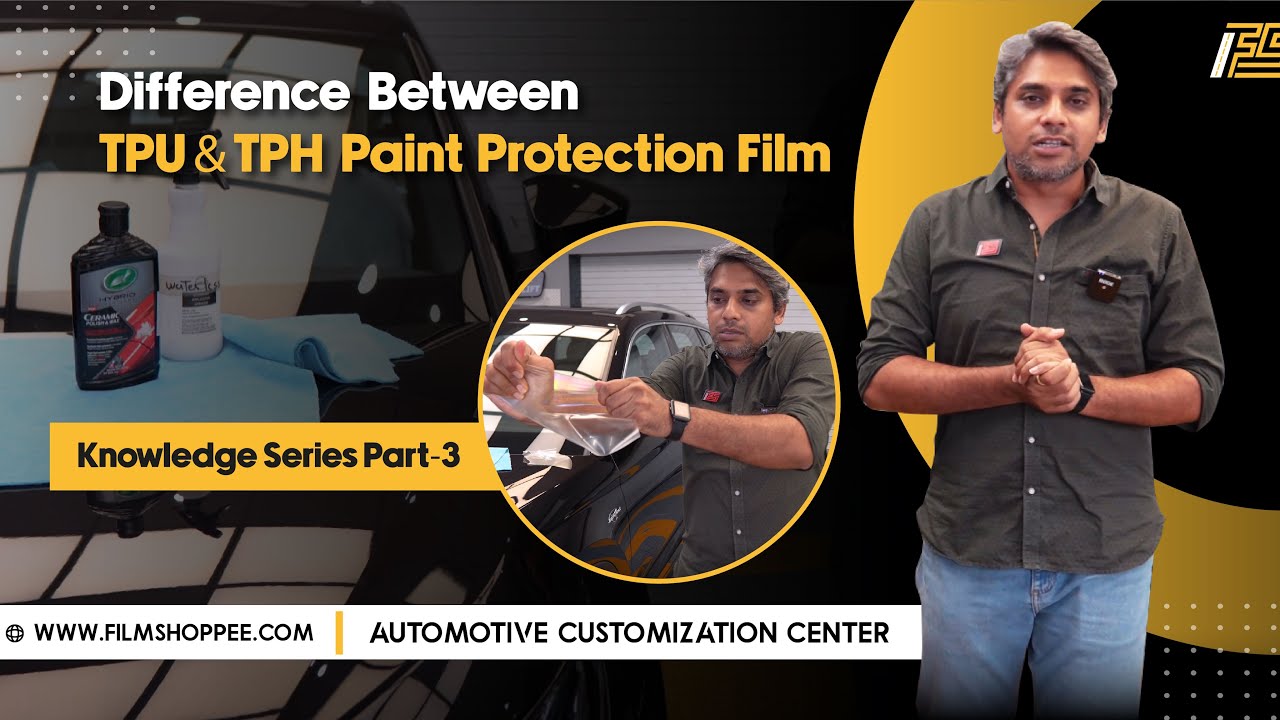TPU vs. TPH Paint Protection Film: Decoding the Difference
In the world of automotive protection, paint protection films (PPF) have emerged as a game-changer. Offering a shield against the elements, road debris, and minor abrasions, PPF preserves the pristine look of a vehicle’s paintwork.
However, with advancements in technology, there are now two major contenders in the PPF arena: TPU vs. TPH PPF films. In this blog, we delve into the differences between TPU and TPH PPF to help you make an informed choice for your vehicle.
Understanding TPU Paint Protection Film
TPU, or Thermoplastic Polyurethane, is a versatile material known for its durability and flexibility. TPU paint protection films are engineered using a blend of polyurethane and other additives, resulting in a film that offers remarkable protection without compromising aesthetics.
Benefits of TPU PPF:
- Clarity and Gloss: TPU films boast exceptional clarity, allowing the vehicle’s paint color and finish to shine through. This feature is particularly appealing to car enthusiasts who want to showcase their vehicle’s aesthetics.
- Self-Healing Properties: One of the standout features of TPU PPF is its self-healing capability. Minor scratches and swirl marks on the film can magically disappear when exposed to heat, such as sunlight or warm water. This property ensures that your vehicle remains free from unsightly blemishes.
- Flexibility: TPU PPF is highly flexible, making it easier to apply on curved surfaces, complex contours, and sharp edges. This flexibility contributes to a seamless appearance once the film is installed.
- Durability: TPU films are engineered to withstand harsh environmental conditions. They provide robust protection against rock chips, insect splatters, bird droppings, and UV rays, helping to maintain your vehicle’s resale value.
Exploring TPH Paint Protection Film
TPH, or Thermoplastic Olefin, is another contender in the PPF market, known for its balance between protection and cost-effectiveness. TPH films are crafted from a polymer blend that combines polypropylene and ethylene-propylene rubber, creating a film that focuses on practicality.
Advantages of TPH PPF:
- Affordability: TPH films tend to be more budget-friendly compared to TPU films, making them a popular choice for car owners seeking reliable protection without breaking the bank.
- Resistance to Stains: TPH PPF is less porous than TPU, which means it can resist stains from substances like oil, grease, and bird droppings more effectively.
- Installation Ease: Due to its composition, TPH films are generally easier to install, making it a favored option for DIY enthusiasts. The films conform well to flat surfaces and require less manipulation during installation.
- Optimal Clarity: While not always as clear as TPU films, TPH films offer a good compromise between optical clarity and impact resistance, maintaining the aesthetic appeal of your vehicle.
- Decent Protection: While TPH films might not possess the same level of self-healing or optical clarity as TPU films, they still offer significant protection against minor impacts and environmental factors.
Choosing the Right Film for Your Vehicle
When deciding between TPU and TPH PPF, several factors come into play:
- Budget: TPU films often come with a higher price tag due to their superior features. If budget is a constraint, TPH films provide a cost-effective yet practical solution.
- Aesthetics: If you’re passionate about maintaining your vehicle’s aesthetic appeal and want a virtually invisible protective layer, TPU PPF is the way to go.
- Matte Finish Options: TPH PPFs are available in matte finish variants, catering to those who prefer a more subdued appearance for their vehicle. This is particularly popular among enthusiasts seeking a unique look.
- DIY vs. Professional Installation: TPH films are more forgiving during installation, making them suitable for DIY projects. TPU films, with their flexibility and self-healing properties, often require professional installation to ensure optimal results.
- Long-Term Goals: Consider your long-term plans for the vehicle. If you’re planning to keep it for years and want the highest level of protection, TPU PPF is the better investment.
- Simplicity of Maintenance: Thanks to its resistance to contaminants, TPH PPFs require less frequent cleaning compared to some other film types. This can be a convenience for vehicle owners with busy schedules.
Conclusion
In the ongoing debate between TPU and TPH paint protection films, both options have their unique advantages. TPU films offer unrivaled clarity, self-healing properties, and top-tier protection, making them the choice for those who prioritize aesthetics and long-term value. On the other hand, TPH films excel in affordability, ease of installation, and practical protection, making them an attractive option for budget-conscious consumers.
Ultimately, the decision boils down to your specific needs, preferences, and priorities. Whether you opt for the premium features of TPU or the practical benefits of TPH, investing in paint protection film is a proactive step toward safeguarding your vehicle’s exterior and preserving its beauty for years to come.



